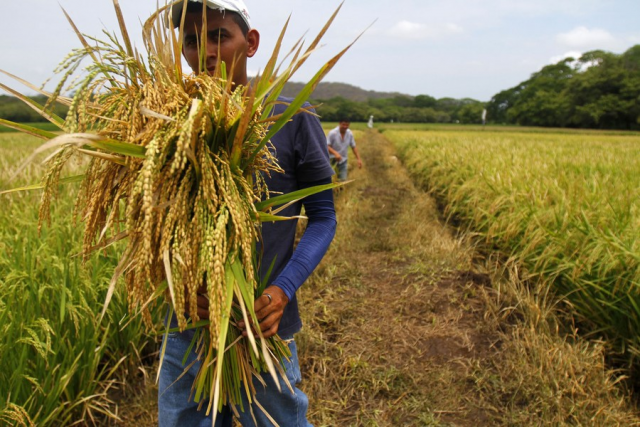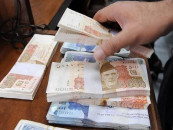All is not good with rice exports
Export earnings grow, but per-unit price of Pakistani rice is going down

There’s good news about rice exports. And there is bad news as well.
In the first seven months of current fiscal year, ie between July 2021 and January 2022, the overall rice export earnings rose to about $1.287 billion from around $1.158 billion in the year-ago period. This, of course, is good news.
The bad news is that both Basmati and non-Basmati varieties of rice fetched a lower per-unit price.
Pakistan earned $362.18 million through exports of Basmati in the first seven months of FY22, higher than $281.67 million in the same period of previous year, showing an increase of about 28.6%.
But to achieve that much increase in export earnings it had to ship 41% more Basmati – 414,190 tonnes in seven months of FY22 against 293,761 tonnes in seven months of FY21.
These are official stats released by the Pakistan Bureau of Statistics (PBS). Trade figures also reveal that export revenue from non-Basmati varieties went up to $924.67 million this year from $875.96 million last year, an increase of about 5.6%.
But that growth in export earnings also came on the back of a much bigger increase in export volumes of non-Basmati rice varieties.
Export volumes in July-January FY22 totalled 2.14 million tonnes against 1.89 million tonnes in July-January FY21, an increase of about 13.4%.
What does this all mean? It means that the per-unit price of Pakistani rice is going down. Let’s see why?
Pakistani exporters of non-Basmati rice make most of the shipments in bulk. The bulk cargoes landing in the importing countries are either sold in loose form or packed in customised small packaging by the importers before retailing.
In some cases, non-Basmati varieties are first imported by the international traders based in Dubai or Singapore or elsewhere and re-exported to other countries either in loose form or after customised retail packaging.
The same happens with the export shipments of Basmati rice, but on a lower scale and with lesser frequency.
Since prices of rice in loose form always remain lower than the branded rice in small packaging, the situation discussed above keeps the per-tonne price of Pakistan’s rice exports lower than what it could be.
As world trade is rebounding after the 2020 pandemic-induced recession, this has created a shortage of containers across the globe. This, too, has made it more difficult for rice exporters to meet their shipment deadlines negotiated with the importers, who want rice in small packaging delivered to their destinations of choice on time.
That is why many rice exporters, particularly commercial exporters, find it easier to meet import orders through third parties that need bulk cargoes of loose rice, for which there is no need of containers because such cargo is generally transported from one country to another through bulk cargo vessels.
Based on data of first seven months of FY22, the average export price of Basmati came to $874.4 per tonne, substantially lower than what it was in FY21.
In seven months of FY21, the average export price of Basmati stood close to $959 per tonne, an analysis of PBS data reveals.
In seven months of FY22, the average export price of non-Basmati rice stood at $432.4 per tonne, down from $464.4 per tonne in the same period of FY21.
New markets, byproducts
Of late, the Ministry of Commerce, Trade Development Authority of Pakistan (TDAP) and Rice Exporters Association of Pakistan all have been making efforts to penetrate newer export markets and the growth in export volumes indicates that they have met with success.
They also need to be equally enthusiastic about improving the per-unit export price of Basmati and non-Basmati rice.
The decline in the average export price between July 2021 and January 2022 needs an in-depth analysis by TDAP because average cereal prices have lately been showing an upward trend.
The FAO Food Price Index – which also takes rice prices into account – shows that between January 2021 and January 2022, cereal prices went up by 12.5%.
Moving forward, rice export earnings can be enhanced not only through higher per-unit price achieved via branding and retail packaging, but also through exports of byproducts of rice and value-added rice-based products.
Liquid glucose obtained from broken rice, rice flakes from broken rice, fructose syrup from broken rice, rice starch and finally rice flour are some well-known value-added products.
Does Pakistan export any of these value-added products in any sizable quantity? Certainly not!
Similarly, rice straw, rice hull, rice germ, rice bran, rice bran oil and wax are some of the most acknowledged byproducts.
Does Pakistan export any of these items in any sizable quantity? Sadly, the answer is again a big no.
Even in domestic markets, rice flour manufacturing for use in confectionery industry and the entire business of preparation of roasted and puffed rice remains almost exclusively in the hands of the unorganised sector. However, the quality-conscious consumers prefer to buy the branded rice puff packets of 1 kg and 0.5 kg imported from Bangladesh.
This isn’t an ideal situation for a country that produces close to nine million tonnes of milled rice per year with a history of total output growing year after year.
Ten years ago, in 2012, Pakistan produced just 5.5 million tonnes of rice. But rice output in 2022 is expected to reach 8.9 million tonnes, according to the United States Department of Agriculture (USDA) projections, from 8.4 million tonnes in 2021.
The writer is a mechanical engineer and is doing masters
Published in The Express Tribune, February 28th, 2022.
Like Business on Facebook, follow @TribuneBiz on Twitter to stay informed and join in the conversation.


















COMMENTS
Comments are moderated and generally will be posted if they are on-topic and not abusive.
For more information, please see our Comments FAQ